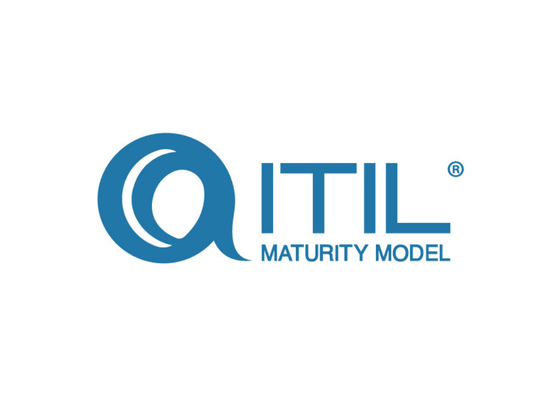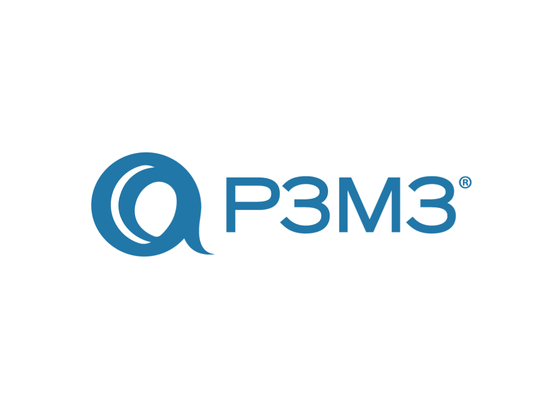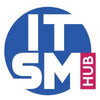In this article:
- What is ITSM?
- So, the Idea of Services is Important?
- What ITSM Isn’t
- How ITSM Benefits Your Organisation, its Employees, and its Customers
- What ITSM Includes Capability-wise
- Sources of ITSM Best Practice
- Key ITSM tool Capabilities
- ITSM vs. ITIL
- What ITIL Is
- A Little ITSM and ITIL History
- What ITIL 4 Includes
- The ITIL 4 Service Value Chain
- The ITIL 4 Practices
- ITIL 4 vs ITIL v3/2011
- My Organisation is Using ITIL v3 – Do We Have to “Upgrade”?
- What about my ITIL Qualifications?
- Common ITSM and ITIL Adoption Mistakes
- ITSM as the Platform for Enterprise Service Management
- ITSM and Digital Transformation
For someone new to IT service management (ITSM), it can be hard to understand what it is, how it works, and why it’s employed by the majority of global organisations. Not only is it a specific way of approaching IT provision and support, that focuses on the IT services being created and consumed, it’s now also something that’s used enterprise-wide – through “enterprise service management” – and provides a backbone for the digital transformation that’s required by most companies.
There’s also a technology-based lexicon and a plethora of acronyms to get to grips with. Whether it's ITIL, the most popular body of ITSM and service management best practice guidance (that was, but no longer is, an acronym for IT Infrastructure Library), or the many three-letter acronyms employed – such as SLA (service level agreement) and FCR (first contact resolution).
Finally, there’s so much freely available information on ITSM on the internet that it’s wise to be cautious in terms of its age and relevancy, because much has changed in the last few years, and the knowledge and perspective of the author. For example, one author might write about ITSM and ITIL as though they’re merely a set of processes – such as incident management and change management – which is both missing the point and dated (because the latest version of ITIL has swapped processes for practices and change management is now “change enablement”). Another might take a fundamentally different approach, recognising that ITSM is a way of delivering IT that’s based on services and fulfilling the needs of the customers and consumers of those services.
All of this and more is covered on this webpage – with it, hopefully, providing you with a quick but valuable overview of what ITSM is (and isn’t).
What is ITSM?
There are many definitions as to what ITSM is. A good place to start is the ITIL definition. Although, as will be covered later, ITIL – in its latest incarnation – has moved on from ITSM to take a broader “service management” view.
So, it’s wise to start with the previous version of ITIL’s definition, that ITSM is:
“The implementation and management of quality IT services that meet the needs of the business. IT service management is performed by IT service providers through an appropriate mix of people, process and information technology.” Source: AXELOS, ITIL 2011 Glossary
This also defines “service management” as:
“A set of specialized organisational capabilities for providing value to customers in the form of services.”
The latest version of ITIL – ITIL 4, which was launched in 2019 – applies a subtly different version of the definition (differences in bold) but the intent is broadly the same:
“A set of specialized organisational capabilities for enabling value for customers in the form of services.” Source: AXELOS, ITIL 4 Glossary
…but there’s no definition of ITSM in the online ITIL 4 Glossary. The reason for this will become clear when you reach the section related to the key differences between the previous version of ITIL (v3/2011) and ITIL 4.
Why does this definition matter – and how does if affect the way we look at why and how we support/deliver IT? We go into this in more detail further down in the article, but here are some key points to consider:
- It emphasises not what or how something is being done, but what result is delivered for the recipient – and whether it matches their perception of value;
- Services are the basis for delivering that value, which are described in customer-relevant terms of what outcomes are supported by consumption of the service;
- Technology alone is unlikely to deliver the entirety of a service – it also depends upon combinations of organisational elements, people’s skills, processes, and other parties all working together to achieve the result;
- Service measurement and reporting, rather than technical/technology measurement and reporting, attests to successful service management; and
- There’s a fundamental assumption that there are a set of defined services against which all this is done.
To take a simple example, an Email Service focuses on whether an organisation is able use email in the intended way to facilitate its business processes, rather than focusing on reporting the uptime of the email application server.
For some organisations, successful use of service management principles and practices may require a significant change in mindset (ie adopting a service culture).
So, the Idea of Services is Important?
Yes, to the extent that it is only by having the right services composed in a particular way, that you as service provider enable value for the consumers of your services. Consider the ITIL 4 definition of a service:
“A means of enabling value co-creation by facilitating outcomes that customers want to achieve, without the customer having to manage specific costs and risks”
Source: AXELOS, ITIL 4 Glossary
There’s a bit to unpack here, but the key points are that the provider and consumer organisation should be collaborating to arrive at the right service(s), a service delivers value by supporting some set of the organisation’s outcomes, and there’s some agreed transfer of cost and risk associated with that service provision (implicitly, the use of that service is a “better” option than the consumer organisation doing it themselves).
Consider the example of a lawnmowing service:
- You’ve decided that you’d rather somebody else mow your lawns;
- You find a provider that performs such a service and agree on scope, frequency, price, and any framing conditions or constraints (“please don’t tread on my flower beds…”);
- The outcome facilitated is you now having time to do other things that are more important to you, and perhaps being viewed positively by your neighbours;
- The provider takes on the risk of performing the work to the agreed standard in return for you paying them a fee to do so. At the same time, your risk of mower-related injury is reduced, and you save money on equipment purchase and maintenance;
- The lawnmowing service manages their equipment and resources to deliver the outcome agreed, without you having to see this or being involved in it.
- Providing that the service delivers the expected value and the exchange of funds and risks occurs as intended, everybody walks away happy.
- Whether it’s an IT service or some other service, the same logic applies.
What ITSM Isn’t
Along the way several myths, misunderstandings and misrepresentations of service management and/or ITSM is, so it’s just as important that we understand what ITSM is not:
- It’s not a standard, so your organisation cannot be “ITSM Compliant” or “ITIL Compliant” - although there are ITSM standards, such as the ISO/IEC 20000-2018 series, that are auditable;
- It’s not a methodology, so there’s no obligation or expectation to doggedly do things in a particular way because ITIL or some other ITSM framework recommends so;
- It’s not “just a bunch of processes” – this was an accusation that underplayed the intent of ITSM and was made against ITIL in its earlier versions (1 and 2)
- It’s not the answer to life, the universe and everything – and it has never pretended to be. Expect to use other frameworks, practices and guidance in conjunction with ITSM to cover the full extent of your service management and business needs
- It’s not foolproof – using ITSM practices isn’t a magical barrier against things going wrong in interesting and unexpected ways, although it’s pretty good at reducing the likelihood of such occurrences and ensuring visibility of where and why things nevertheless do go wrong.
How ITSM Benefits Your Organisation, its Employees, and its Customers
There are many layers to the benefits available from ITSM. For example, some are at a business level, while others are at an employee or customer level. Plus, while the adoption of ITSM thinking and practices will deliver benefits, these are significantly amplified by using a fit-for-purpose ITSM tool. Even more so now that quasi-artificial intelligence (AI)-enabled capabilities – that employ machine learning and natural language understanding – are increasingly being added to both traditional and newer ITSM tools.
For example, at a business level, your organisation might wish to employ ITSM to deliver against a strategic need for one or more of:
- Reducing operational IT costs through the consistent use of best practice ITSM practices and fit-for-purpose ITSM technology, plus reducing “IT wastage”
- Improving the quality of service and support to both employees and customers while also upping the speed of resolution/provisioning
- Increasing satisfaction or the experience for both internal and external customers
- Increasing competitive advantage through better IT enablement
- Improving governance and compliance or reducing risk
- Offering improved flexibility and increased agility/speed of delivery for new IT services and business-change enablement
- Formalising IT capabilities and accountability
- Driving continual improvement.
At an IT support level, ITSM-driven changes/improvements can help significantly from an employee perspective.
For example, better-handled incidents – in terms of swifter resolutions and perhaps even issue and impact prevention – not only offers increased availability of IT and business services but there’s also improved employee productivity (and experience) which, in turn, leads to better business operations and results.
Or, from an IT efficiency perspective, ITSM principles and fit-for-purpose ITSM technology will provide repeatable processes, minimise manual effort (and costs), and make better use of potentially scarce IT people resources.
This can be seen not only in the use of automation but also in service management staples such as knowledge management, self-service/help, and the tool-delivered reporting and analytics capabilities.
What ITSM Includes Capability-wise
The easiest way to outline what ITSM includes is to call out some of the most adopted ITIL practices (there’s more on the full scope of ITIL later). Other sources of service management best practice guidance are also available (and are listed further down in this article) but not only is ITIL the most popular source, globally, it’s also the one that has been updated most recently.
All the practice purpose definitions shared below are from the ITIL 4 Foundation Edition and are listed in alphabetical, rather than adoption-sequence or popularity order.
- Change enablement – “To maximize the number of successful service and product changes by ensuring that risks have been properly assessed, authorizing changes to proceed, and managing the change schedule.”
Where a change is defined as: “The addition, modification, or removal of anything that could have a direct or indirect effect on services.”
- Continual improvement– “To align the organization’s practices and services with changing business needs through the ongoing improvement of products, services, and practices, or any element involved in the management of products and services.”
- Incident management– “To minimize the negative impact of incidents by restoring normal service operation as quickly as possible.”
Where an incident is defined as: “An unplanned interruption to a service or reduction in the quality of a service.”
- IT asset management– “to plan and manage the full lifecycle of all IT assets, to help the organization: maximize value, control costs, manage risks, support decision-making about purchase, re-use, retirement, and disposal of assets, and meet regulatory and contractual requirements.”
Where an IT asset is “Any financially valuable component that can contribute to the delivery of an IT product or service.”
- Knowledge management – “To maintain and improve the effective, efficient, and convenient use of information and knowledge across the organization.”
- Problem management – “To reduce the likelihood and impact of incidents by identifying actual and potential causes of incidents, and managing workarounds and known errors.”
Where:
- a problem is defined as: “A cause, or potential cause, of one or more incidents”,
- a workaround is “A solution that reduces or eliminates the impact of an incident or problem for which a full resolution is not yet available”, and
- a known error is “A problem that has been analysed but has not been resolved.”
- Service catalogue management – “To provide a single source of consistent information on all services and service offerings, and to ensure that it is available to the relevant audience.”
There are different views of the service catalogue. For example, the user view (often called a service request catalogue), the customer view, and IT to IT customer view.
- Service configuration management – “To ensure that accurate and reliable information about the configuration of services, and the configuration items that support them, is available when and where it is needed.”
Where a configuration item is defined as “Any component that needs to be managed in order to deliver an IT service.”
- Service desk – “To capture demand for incident resolution and service requests. It should also be the entry point and single point of contact for the service provider with all of its users.”
- Service financial management– “To support the organization’s strategies and plans for service management by ensuring that the organisation’s financial resources and investments are being used effectively.”
- Service level management – “To set clear business-based targets for service levels, and to ensure that delivery of services is properly assessed, monitored, and managed against these targets.”
Where a service level is defined as: “One or more metrics that define expected or achieved service quality.”
- Service request management– “To support the agreed quality of a service by handling all pre-defined, user-initiated service requests in an effective and user-friendly manner.”
Where a service request is defined as: “A request from a user or a user’s authorized representative that initiates a service action which has been agreed as a normal part of service delivery.”
Please note that these are just 12 of the 34 practices contained with the ITIL 4 service management best practice guidance – and whether or not your organisation has, or should adopt these practices should be determined by your specific needs.
Sources of ITSM Best Practice
While this webpage talks to ITIL as the most popular body of ITSM and service management guidance, there are other sources of service management best practice available to people and organisations that are looking to improve upon their ITSM status quo. These include:
- BiSL and BiSL Next – BiSL (Business Information Services Library) is a vendor-independent public domain library for the implementation of business information management. BiSL Next is promoted as the next generation of BiSL.
- COBIT – COBIT is “a framework for the governance and management of enterprise information and technology, aimed at the whole organization.” COBIT is no longer an acronym for “Control Objectives for Information and Related Technologies” – as with ITIL, it’s now just a name.
- FitSM – FitSM is a free standard for lightweight ITSM.
- ISO/IEC 20000 – The ISO/IEC 20000-1:2018 standard specifies the requirements for an organisation to establish, implement, maintain, and continually improve a service management system.
- IT4IT – The IT4IT Reference Architecture, a standard of The Open Group, is described as a “tool for aligning and managing a Digital Enterprise.”
- VeriSM – VeriSM is described as “a service management approach for the digital age that helps service providers to create a flexible operating model to meet desired business outcomes.”
Organisations might blend a number of these approaches to best suit their ITSM needs. Plus, of course, organisations could be using ITSM for their IT service delivery and support without the help of a formal approach. Sometimes this is done unknowingly, with it just what works for them rather than the formal application of best practices.
In addition, there are other frameworks and practices that an organisation may also use in conjunction with ITSM best practices – project management methodologies (e.g. Prince 2, PMBOK), system/software development approaches (e.g. Agile, DevOps), enterprise architecture frameworks (e.g. TOGAF, enterprise ), quality and improvement frameworks (e.g. LeanIT, Six Sigma), governance practices and standards (e.g. ISO 38500). Done for valid reasons and with the “big picture” in mind, these other frameworks and practices should integrate with ITSM and each other and mutually enhance the value of outcomes achieved.
Key ITSM tool Capabilities
ITSM tools amplify the benefits of ITSM and ITIL through the provision of enabling capabilities such as automated workflows.
These are digital-enabling capabilities that help ITSM processes to both flow and required outcomes to be achieved. For example, the enablement of the ITSM practices, and the associated processes, that are listed in the section above.
The digital workflow capabilities include automated routing, queue management, notifications and alerts, approvals, and service level targets to help ensure that work is progressing efficiently.
Some ITSM tool capabilities can be considered cross-practice enablers (even if there’s an ITIL 4 practice related to them). These capabilities include:
- Omnichannel service and support capabilities that include self-service/help and chat (including chatbots) as well as the traditional telephone, email, and potentially walk-up channels.
- Knowledge management capabilities that allow service-and-support staff to undertake work that’s beyond their individual knowledge and experiences. This knowledge also powers machine-learning-based ITSM capabilities.
- Improved collaboration capabilities that make it easier for work to be passed between team members and even across teams in different business functions.
- Reporting and analytics capabilities that give greater visibility into the status of operations and performance – with the ability to see what has been achieved and what’s outstanding. Plus, facilitating the identification of improvement opportunities.
- Platform-based capabilities that allow the creation of new workflows and applications that extend ITSM tools beyond the core ITSM capabilities (including to meet the service management needs of other, non-IT, business functions).
- Automation capabilities, including the introduction of intelligent automation that employs machine learning and natural language understanding technologies to undertake previously manual tasks or to augment employee capabilities.
Plus, as with all technologies, there are non-functional capabilities (or requirements) that relate to requirements such as security, performance, integrations, upgradability, scalability, and cost.
ITSM vs. ITIL
To start the differentiation of ITIL from ITSM, ITSM is a generic approach, whereas ITIL is a specific body of best practice guidance related to the service management approach. It’s easy for people to use the terms ITSM and ITIL interchangeably but they are two separate things.
With the previous versions of ITIL, an easy way to explain the difference was that ITIL best practice is ITSM, but not all ITSM is ITIL: As already outlined, ITIL is not the only approach to ITSM. An organisation could be employing ITSM but using a different body of best practice or no formal guidance at all.
However, ITIL 4 has broken this explanation by elevating its content from ITSM to service management. This requires a revamp of how ITSM and ITIL are differentiated, such that:
- ITIL is a set of service management best practices, but
- Not all service management practices are ITIL, and
- Not all service management is ITSM.
This is the point at which Venn Diagrams can be really useful, so feel free to draw overlapping circles on your whiteboard… The rationale for the latter bullet will become clearer once the concept of “enterprise service management” is explained later.
What ITIL Is
ITIL has already been mentioned but if you’re new to ITSM, then you’re likely also new to ITIL. Here’s some explanation to help:
- ITIL was created way back in 1989;
- It was born out of the UK Government’s dissatisfaction with governmental IT in the 1980s. Because of this, the Central Computer and Telecommunications Agency, now called the Office of Government Commerce, was tasked with creating a framework for the efficient, and financially responsible, use of technology resources;
- Before the 2007 publication of ITIL v3, ITIL was an acronym for the “IT Infrastructure Library”;
- Since ITIL v3, ITIL now simply means “ITIL” despite the continued use of the long-form name by some parties.
ITIL is officially described as:
“…the most widely recognized framework for IT and digitally enabled services in the world. It provides comprehensive, practical and proven guidance for establishing an effective service management system.”
Source: https://www.axelos.com/itil
The guidance offered in ITIL, and there’s more on this below, is deliberately this – it’s service management guidance, not a service management standard. It’s designed for organisations to select the elements relevant to their needs and apply via an “adopt and adapt” approach, rather than trying to adopt some or all 34 ITIL 4 practices “to the letter”.
A Little ITSM and ITIL History
The introduction of ITIL in 1989 was not the beginning of either service management or ITSM. Much that preceded ITIL, in IT operations management terms, can be considered ITSM and no doubt influenced ITIL. For example, in mainframe environments, there were likely availability management, capacity planning, disaster recovery, change management, configuration management, and problem management capabilities in place.
Additionally, ITSM wasn’t the first version of service management. For example, the 1984 Richard Normann publication “Service Management: Strategy and Leadership in the Service Business” is viewed as a foundation stone of service-based thinking and service management excellence.
So, while ITIL can be pointed to as the key factor in ITSM growth in the 1990s and early 2000s, there was much that preceded it in both ITSM and service management terms.
Since 1989, multiple versions of ITIL have been released:
- ITIL v2 in 2000-2001
- ITIL v3 in 2007
- ITIL 2011, a refresh of ITIL v3, in 2011
- ITIL 4 in 2019.
What ITIL 4 Includes
The backbone of the ITIL 4 service management best practice guidance is the ITIL service value system. This depicts how demand for services is turned into value.
The ITIL Service Value System
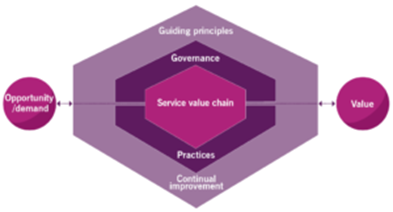
Source: AXELOS, “ITIL Foundation: ITIL 4 Edition” (2019)
The five key elements within the service value system – viewed from top to bottom – are:
- Guiding principles. Of which there are seven – focus on value, start where you are, progress iteratively with feedback, collaborate and promote visibility, think and work holistically, keep it simple and practical, and optimize and automate. These relate to how service management should be approached by an organisation.
- ITIL 4 emphasises three important aspects of governance: whether change is in line with stakeholder needs and external forces; assigning responsibility for strategy development, policy creation, and execution; and monitoring organisational performance.
- Service value chain. This is described in the next section.
- Also called management practices. These are also described later.
- Continual improvement. This practice supersedes ITIL v3/2011’s continual service improvement (CSI) book and process to reflect that it can be applied to more than the improvement of services. For example, the improvement of operational performance and processes, organisational structures, partnerships, and technology adoption.
Another important element of ITIL 4 is “The 4 Dimensions of Service Management.” This replaces ITIL v3/2011’s 4Ps of people, process, product (technology), and partners. As shown below, the four dimensions aren’t too different from the earlier 4Ps.
The Four Dimensions of Service Management

Source: AXELOS, “ITIL Foundation: ITIL 4 Edition” (2019)
The ITIL 4 Service Value Chain
The service value chain sits at the centre of the ITIL 4 service value system and is “an operating model which outlines the key activities required to respond to demand and facilitate value realisation through the creation and management of products and services.”
The ITIL Service Value Chain

Source: AXELOS, “ITIL Foundation: ITIL 4 Edition” (2019)
There are six repeatable elements – or key activities – within the service value chain:
- Plan– To create a shared understanding of what’s needed (for service provision and support)
- Improve– The continual improvement across products, services, and practices
- Engage– To understand stakeholder needs and ensure good working relationships
- Design & transition– To ensure that products and services meet stakeholder expectations (across quality, cost, and time-to-market)
- Obtain/build– To ensure that service components are available as needed
- Deliver & support– To ensure service delivery and support meet agreed specifications and expectations.
These six elements are used to create “value streams” that define how value is created. Each can be reused within a single value stream – for example, a value stream might have multiple instances of engagement. The lack of directional arrows between the six activities is intentional – the activities may be applied in various sequences or not at all, depending upon the initiating opportunity (or demand).
The ITIL 4 Practices
A practice is defined in ITIL 4 as: “…a set of organisational resources designed for performing work or accomplishing an objective.”
There are 34 management practices in ITIL 4, split across three groupings:
- 14 General Management practices which have, as the name suggests, been derived from broader management practices for use in service management
- 17 Service Management practices, born out of service management and IT service management experience
- 3 Technical Management practices, derived from more technical roots and incorporated into service management
ITIL 4 vs ITIL v3/2011
The evolution of the philosophy underpinning ITIL has resulted in some initially surprising and sometimes jarring differences between ITIL v3 and ITIL 4. These differences have perhaps made more disconcerting by the resulting mix of extremely similar, and quite different approaches and practices:
- The ITIL guidance has moved from ITSM to service management to reflect organisations using ITSM and ITIL outside of IT.
- ITIL 4 increases the focus on value creation – or value co-creation. The service value system and service value chain models have replaced the ITIL v3/2011 service lifecycle.
- 34 ITIL 4 management practices replace the 26 ITIL v3/2011 processes and four functions, although many of the processes from ITIL v3 are represented in ITIL 4 as practices with a similar purpose
- 2016’s ITIL Practitioner Guide publication’s guiding principles have been included in ITIL 4 in a reimagined form.
- The 4Ps of ITIL v3/2011 have been replaced by “The 4 Dimensions of Service Management.”
- The reference documentation for ITIL 4 has moved to a “per-course” model – a significant difference to ITIL v3 “per lifecycle stage” approach.
My Organisation is Using ITIL v3 – Do We Have to “Upgrade”?
The simple answer is “NO”, but there are nuances to that answer.
Organisations that are using ITIL v3 practices didn’t wake up on 28 February 2019 to suddenly find that their existing processes were any better or worse than the day before ITIL 4 was published. Two years later, we find three main variations for ITIL v3-using organisations:
- Organisations who were already using ITIL v3 continuing to apply ITIL v3 guidance because there’s no compelling reason to take on the additional guidance in ITIL 4 (yet);
- Organisations who were already using ITIL v3 selectively applying guidance from ITIL 4 to address opportunities that the previous guidance didn’t help with; and
- Organisations taking the opportunity to refactor their service management practices using ITIL 4 guidance in conjunction with business transformation, service management tool replacement, or operating model changes.
As with any other change to business or IT practices, there needs to be a valid business case for changing the way you currently work.
What about my ITIL Qualifications?
From an individual perspective, your ITIL 3 qualifications remain valid. ITIL 4 does, however, have a new certification scheme and set of qualifications.
We have a range of options for individuals and groups on our website, so visit here to find out more about the ITIL 4 certification scheme and our course offerings.
Common ITSM and ITIL Adoption Mistakes
There are many mistakes made by organisations as they adopt ITSM and ITIL. Here are eight examples to get you thinking about what your organisation may need to avoid:
- Misunderstanding what ITSM and ITIL are. First, beyond the confusion between the two, people might see ITSM as merely a set of processes (hopefully ITIL 4 will help to correct this via its use of practices). Then they might see ITIL as an industry-standard rather than the guidance it’s intended as.
- Viewing ITSM and ITIL adoption as the “endgame”. Importantly, ITSM and ITIL are not the end, they’re only the means to an end – which should relate to strategic business objectives such as increased customer retention, higher margins, or greater agility.
- “Implementing” ITIL as a one-off, ITSM-focused project. As with the endgame mistake, this should be a business-focused improvement project, the first of many phases.
- Not having an ITSM and ITIL vision. For example, what happens after the initial introduction of new ITSM processes/practices? ITSM and ITIL are ultimately about continual improvement, not a one-off delivery project.
- Ignoring the other ITSM approaches. ITIL is the most popular ITSM approach globally but the others – such as COBIT, ISO/IEC 20000, IT4IT, and VeriSM – shouldn’t be overlooked, with each having benefits.
- Thinking the technology will deliver everything. Technology helps but people are likely more important. A great piece of guidance related to this is – the right people can still make ITSM work with the wrong technology, but the right technology will perform poorly in the hands of the wrong people. Remember: automating a poor practice will produce poor results faster and more consistently…
- Adopting ITSM and ITIL in a vacuum. Don’t ignore the users, in terms of both service providers and receivers, because success will be hard without their early involvement. Also, don’t overlook the connectivity between different processes/practices just because some will be future enhancements. Instead, plan for these as early as possible to avoid later rework.
- Underestimating what’s needed for success. It’s extremely common for organisations to underestimate the time and effort required to define, implement, and embed new ITSM or ITIL practices in an organisation, as it’s not an everyday occurrence. If you think of it as a business transformation initiative with a perhaps more limited scope, you’re more likely to understand the scale of what needs to be done.
There are many other possible ITSM and ITIL adoption mistakes and, in many ways, the best ITSM and ITIL adoption tips are the flipping of these common mistakes – the things not to do – into the positive behaviours that are needed for ITSM and ITIL success.
If you want to learn more about how to avoid these mistakes, we have a range of consulting services to advise and assist organisations in their ITSM journey here.
ITSM as the Platform for Enterprise Service Management
It’s hard to talk about ITSM these days without also bringing in enterprise service management – the use of ITSM capabilities by other business functions to improve their services, operations, experiences, and outcomes.
Some might call the sharing of ITSM capabilities, including the corporate ITSM tool, outside of IT different names – perhaps simply “service management” or even digital transformation. What’s more important though is that, based on a 2021 AXELOS and ITSM.tools survey, two-thirds of organisations already have an enterprise service management strategy in place; with only 11% of organisations having no plans to extend the use of ITSM to other business functions.
There are many reasons for the growth in enterprise service management adoption and the use of service management capabilities in other business functions. These include:
- The adoption of service-based thinking transforms business function operations from a supply-based view of what they do, and deliver, to a demand-based view. Potentially with business function capabilities being redesigned around employee needs rather than their internally-focused thinking.
- Best practice service management guidance – such as ITIL 4 – helps business functions to optimise their operations, with this providing better outcomes, service experiences, efficiency gains, and cost reductions.
- The shared practices deliver standardised and optimised processes, making employee access to service and support capabilities both easier and better.
- ITSM tool capabilities such as digital workflow enablement, self-service portals and service request catalogs, knowledge management, automation and orchestration, collaborative capabilities, and anytime and anyplace access all amplify the benefits of the employed best practice service management guidance.
ITSM and Digital Transformation
In many ways, enterprise service management can be seen as the bridge between ITSM and digital transformation – with the ITSM capabilities that are extended to other business functions, to enable the execution of enterprise service management strategies, also bringing digital transformation to those functions (via the corporate ITSM tool). Whether this is the introduction of digital workflows, self-service portals, new smart technologies such as machine learning and natural language understanding, or other tool capabilities.
With 80% of organisations accelerating their digital transformation strategies because of the global pandemic, the future of ITSM, (enterprise) service management, and ITIL is strong. If you would like to find out more about how ITSM and ITIL will help with your organisation’s digital transformation, contact us today to find out more.
